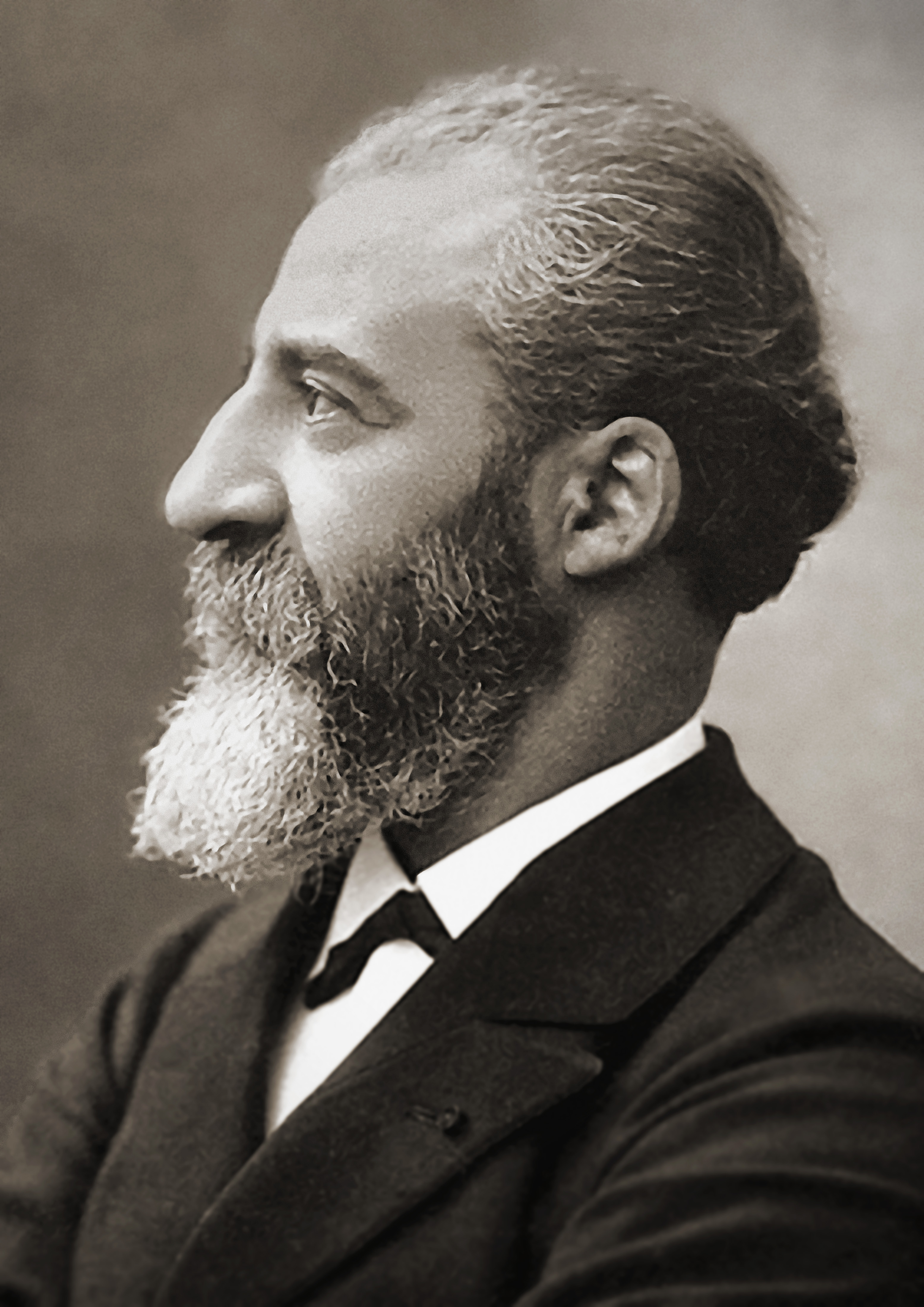Henri Moissan
Henri Moissan (28 September 1852 – 20 February 1907) was a French chemist who won the Nobel Prize in Chemistry in 1906 for his work in isolating fluorine from its compounds. Moissan's achievement in isolating fluorine, a feat that had challenged chemists for many years due to its highly reactive nature, marked a significant milestone in the field of chemistry.
Early Life and Education[edit | edit source]
Henri Moissan was born in Paris, France. From a young age, he showed a keen interest in science, particularly in chemistry. He pursued his education at the Museum of Natural History under the guidance of notable chemists of the time. Moissan's dedication to his studies laid the groundwork for his future achievements in the field of chemistry.
Career and Research[edit | edit source]
Throughout his career, Moissan focused on high-temperature chemistry. He was particularly interested in the production of extremely high temperatures and their application in chemical synthesis. Moissan's efforts led to the development of the electric arc furnace, which he used to study the properties of various elements and compounds under high temperatures.
One of Moissan's most significant contributions to chemistry was his work on fluorine. The element was known for its extreme reactivity, making it difficult to isolate. In 1886, after several years of experimentation, Moissan successfully isolated fluorine by electrolysis of a solution of potassium bifluoride (KHF2) in anhydrous hydrogen fluoride (HF). This groundbreaking work earned him the Nobel Prize in Chemistry in 1906.
In addition to his work on fluorine, Moissan made significant contributions to the study of diamonds. He was one of the first to synthesize diamonds by replicating the extreme pressure and temperature conditions necessary for diamond formation. Although the diamonds produced were too small for jewelry, this achievement opened new avenues for research in material science.
Legacy[edit | edit source]
Henri Moissan's work had a profound impact on the field of chemistry. His methods and discoveries paved the way for future research in high-temperature chemical reactions and the study of elements under extreme conditions. The Moissanite, a naturally occurring silicon carbide and a synthetic diamond simulant, was named in his honor.
Moissan's dedication to his research and his contributions to chemistry are remembered through the Henri Moissan Prize, which is awarded to chemists who have made outstanding contributions in the field of fluorine chemistry.
Death[edit | edit source]
Henri Moissan passed away on 20 February 1907 in Paris. His legacy continues to inspire chemists and researchers around the world.
Search WikiMD
Ad.Tired of being Overweight? Try W8MD's physician weight loss program.
Semaglutide (Ozempic / Wegovy and Tirzepatide (Mounjaro / Zepbound) available.
Advertise on WikiMD
|
WikiMD's Wellness Encyclopedia |
| Let Food Be Thy Medicine Medicine Thy Food - Hippocrates |
Translate this page: - East Asian
中文,
日本,
한국어,
South Asian
हिन्दी,
தமிழ்,
తెలుగు,
Urdu,
ಕನ್ನಡ,
Southeast Asian
Indonesian,
Vietnamese,
Thai,
မြန်မာဘာသာ,
বাংলা
European
español,
Deutsch,
français,
Greek,
português do Brasil,
polski,
română,
русский,
Nederlands,
norsk,
svenska,
suomi,
Italian
Middle Eastern & African
عربى,
Turkish,
Persian,
Hebrew,
Afrikaans,
isiZulu,
Kiswahili,
Other
Bulgarian,
Hungarian,
Czech,
Swedish,
മലയാളം,
मराठी,
ਪੰਜਾਬੀ,
ગુજરાતી,
Portuguese,
Ukrainian
Medical Disclaimer: WikiMD is not a substitute for professional medical advice. The information on WikiMD is provided as an information resource only, may be incorrect, outdated or misleading, and is not to be used or relied on for any diagnostic or treatment purposes. Please consult your health care provider before making any healthcare decisions or for guidance about a specific medical condition. WikiMD expressly disclaims responsibility, and shall have no liability, for any damages, loss, injury, or liability whatsoever suffered as a result of your reliance on the information contained in this site. By visiting this site you agree to the foregoing terms and conditions, which may from time to time be changed or supplemented by WikiMD. If you do not agree to the foregoing terms and conditions, you should not enter or use this site. See full disclaimer.
Credits:Most images are courtesy of Wikimedia commons, and templates, categories Wikipedia, licensed under CC BY SA or similar.
Contributors: Prab R. Tumpati, MD



